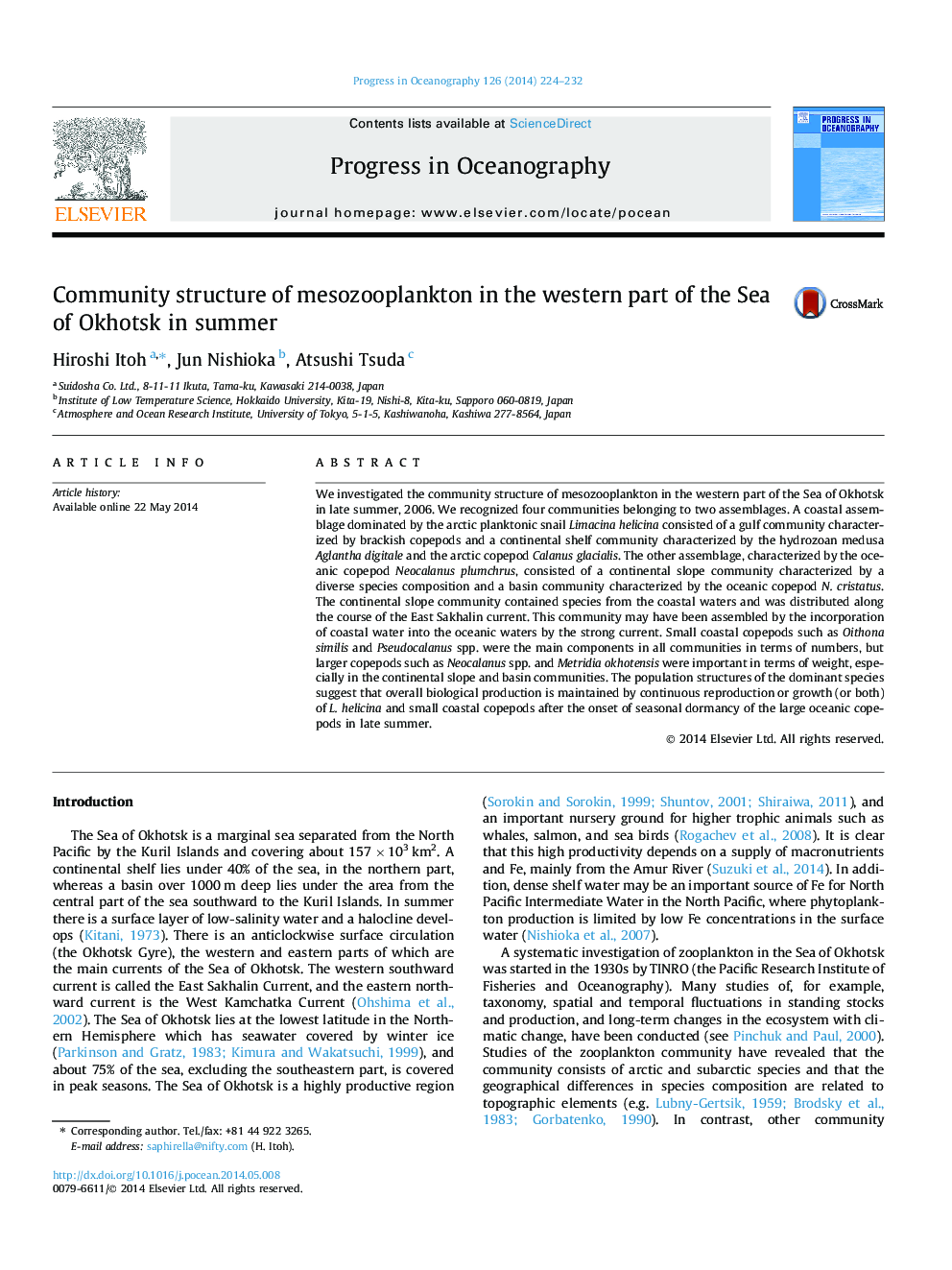| کد مقاله | کد نشریه | سال انتشار | مقاله انگلیسی | نسخه تمام متن |
|---|---|---|---|---|
| 4553107 | 1627929 | 2014 | 9 صفحه PDF | دانلود رایگان |

• We described mesozooplankton communities in the Sea of Okhotsk during summer.
• Gulf, continental shelf, continental slope and basin communities were recognized.
• Continental slope community in the East Sakhalin current had the highest diversity.
• Small copepods dominated the study area, but large copepods increased offshore.
• Limacina helicina and coastal copepods continued reproduction in late summer.
We investigated the community structure of mesozooplankton in the western part of the Sea of Okhotsk in late summer, 2006. We recognized four communities belonging to two assemblages. A coastal assemblage dominated by the arctic planktonic snail Limacina helicina consisted of a gulf community characterized by brackish copepods and a continental shelf community characterized by the hydrozoan medusa Aglantha digitale and the arctic copepod Calanus glacialis. The other assemblage, characterized by the oceanic copepod Neocalanus plumchrus, consisted of a continental slope community characterized by a diverse species composition and a basin community characterized by the oceanic copepod N. cristatus. The continental slope community contained species from the coastal waters and was distributed along the course of the East Sakhalin current. This community may have been assembled by the incorporation of coastal water into the oceanic waters by the strong current. Small coastal copepods such as Oithona similis and Pseudocalanus spp. were the main components in all communities in terms of numbers, but larger copepods such as Neocalanus spp. and Metridia okhotensis were important in terms of weight, especially in the continental slope and basin communities. The population structures of the dominant species suggest that overall biological production is maintained by continuous reproduction or growth (or both) of L. helicina and small coastal copepods after the onset of seasonal dormancy of the large oceanic copepods in late summer.
Journal: Progress in Oceanography - Volume 126, August 2014, Pages 224–232